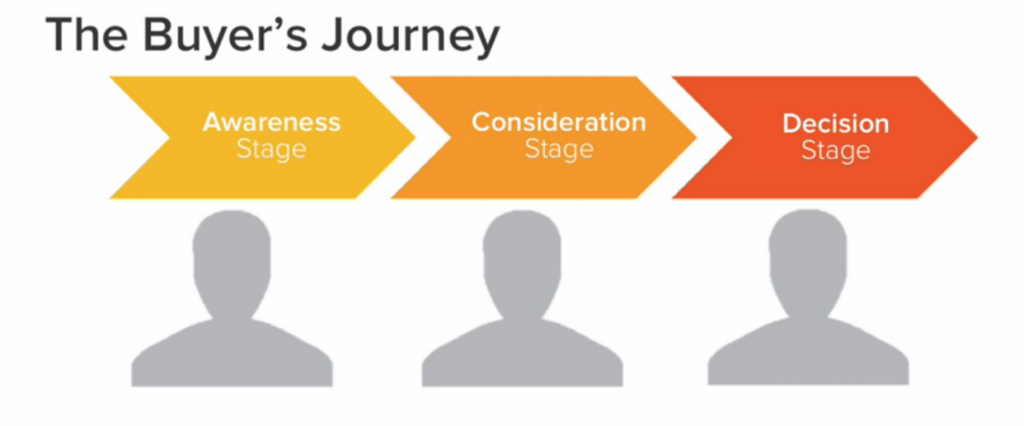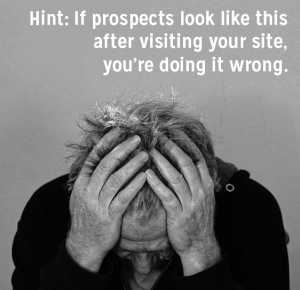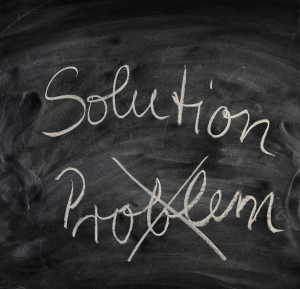
Master the Buyer’s Journey: Automotive Lead Generation
In auto sales, it’s easy to get caught up in your best practices in the showroom and forget about the buyer’s journey — the sales cycle a person is moving through as they decide what kind of car they want to buy (and who they want to buy it from).
To better serve your customers, it’s vital that your staff understands how individuals are moving through the sales funnel. Working knowledge of the sales cycle from start to finish means capitalizing on all the effort you’re putting into automotive lead generation.
The Buyer’s Journey for Auto Sales
Handling auto marketing and sales efforts in a certain fashion just because “That’s the way we’ve always done it” is a good way to run a dealership . . . if your goal is to make the work easy and repetitive for everyone involved.
If you want to sell cars, you’ll want a smarter approach.
The buyer’s journey, as outlined by our friends at HubSpot, is a model that makes the buyer’s behavior central to everything you do. When you break down the purchasing path your customers are working through, it’s easier to see where you are — and aren’t — offering everything you can to help them make a decision.

Note: The buyer’s journey is different from the inbound methodology we use at 9 Clouds. The inbound methodology is a marketer’s roadmap, while the buyer’s journey traces the perspective of a lead. If you want to make the most of your online presence, we recommend you think with both.
Let’s break down the three steps of the buyer’s journey as they relate to the sales funnel for automotive buyers.
1. Awareness Stage
The first stage of the sales cycle, the awareness stage, is frequently overlooked.
 Remember that the buyer’s journey isn’t about you; it’s about your customer. When you think of it that way, it becomes clear that your sales process shouldn’t be starting when a lead steps onto your lot. In the digital marketing age, you need to reach them earlier.
Remember that the buyer’s journey isn’t about you; it’s about your customer. When you think of it that way, it becomes clear that your sales process shouldn’t be starting when a lead steps onto your lot. In the digital marketing age, you need to reach them earlier.
Buyers in the awareness stage have recognized that they have a small problem (or symptoms of a bigger problem), or they’ve noted a potential opportunity for themselves.
For auto sales, that doesn’t mean they’ve thought, I need a new car. It means they’re now awake to the ideas that could lead them to car shopping, like:
- My car’s got a lot of miles on it.
- Am I spending too much on auto repairs?
- I wish my smartphone could sync better with this vehicle.
These thoughts and questions will motivate the buyer to seek out answers. In that research, a healthy inbound marketing strategy will guide them to you. By helping answer their questions, you have the chance to learn more about what concerns will eventually lead them to shop for a new car.
Just promoting the latest models or specials your dealership is offering is an attempt to meet your need of selling cars, but helping leads with their questions is meeting their needs.
A buyer-centric perspective will get you to make good moves, like abandoning keywords that make sense to your staff in favor of the ones that make sense for your leads.
Content Ideas for the Awareness Stage
- General blog posts on things like “Signs You Need a New Car”
- eBooks about other concerns that might start nudging someone to look for a replacement vehicle
2. Consideration Stage
In the next stage, the consideration stage, your future auto buyers have processed all those little concerns and questions. They’ve poured over blog posts and articles, dug through forums, and talked to friends.
Finally, they’re able to clearly define the problem they’re facing, such as:
- I’m unhappy with my current vehicle.
- This car is costing more money than it’s worth.
- When my daughter starts driving, we’ll need another set of wheels.
Whereas before the prospect wanted to know more about their situation, now they have named their problem and are ready to find a solution. Again, you want to make sure that you’ve got content in place to help them decide what options are best for them.
 For example, someone who has decided they’re unhappy with their car might:
For example, someone who has decided they’re unhappy with their car might:
- Switch to biking everywhere.
- Use Uber or taxi services to get around.
- Buy a used car.
- Buy a new car.
- Lease a new car.
So ask yourself, if someone were to visit your site wondering how to address the problem of their current vehicle situation, do you have material that will help them, or would your web pages just bombard them with special offers on new vehicles?
If they would, it’s probably time to step back, evaluate your marketing strategies, and clear out practices that aren’t pulling their weight. Check out our blog post on decluttering your website to make some room for content that helps buyers reach the third stage.
Content Ideas for the Consideration Stage
- Comparison pages about commuting options in your region
- Blog posts breaking down benefits provided by buying new or used
3. Decision Stage
The final step in the buyer’s journey, the decision stage, happens when prospects have contemplated all their possible solutions and have decided how they’ll proceed to address their problem or opportunity.
Having weighed all the options, some leads have decided to buy a new car — hooray! And if you were diligently supplying them with great information, you’re likely going to be the first place they turn to shop and research exactly what vehicle they want to buy.
 Think about it: You were there when they had some general auto questions. You were helpful when they defined the problem and wanted some solutions. Now, they’ve decided they want to buy, and here you are — one of their most-trusted resources with vehicles for sale.
Think about it: You were there when they had some general auto questions. You were helpful when they defined the problem and wanted some solutions. Now, they’ve decided they want to buy, and here you are — one of their most-trusted resources with vehicles for sale.
Really, you should not push your product until a lead has entered this stage. If you do, the information you offer in earlier stages feels tainted by your auto-sales agenda. And that’s what makes catering your practices to the buyer’s journey so vital.
So how well is your site doing at nurturing these prospects? If you’d like, 9 Clouds is happy to answer that question. We offer free digital audits that can give you an expert take on your automotive lead generation strategy and note areas where you might be able to improve. Check it out »
Content Ideas for the Decision Stage
- Webinars on finding the right car for you
- Blog posts about a specific model’s features
- Emails about special offers on the type of vehicles the lead has indicated interest in
Learn How to Follow Leads Through the Buyer’s Journey
Once you’re looking at the sales funnel as it relates to the buyer’s perspective, it’s important to evaluate how well your strategies are helping usher leads through the sales cycle and giving them the information they need.
To learn how to keep track of your hot leads and get them to your sales staff, get a free download of this eBook for auto dealers.






